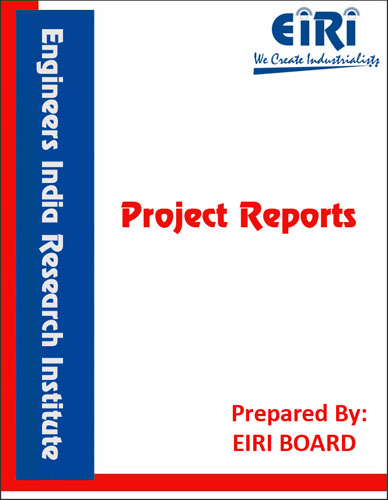The project report includes Present Market Position and Expected Future Demand, Market Size, Statistics, Trends, SWOT Analysis and Forecasts. Report provides a comprehensive analysis from industry covering detailed reporting and evaluates the position of the industry by providing insights to the SWOT analysis of the industry.
The commercial production of instant teas began in the 1940, and this form of tea has grown in popularity in the United States to the extent that it now comprises 42% of tea sales in that country, although on a worldwide basis instant tea accounts for only a very small proportion (less than 5%) of consumption.
The demand in the United States is for instant teas soluble in cold water, because it is iced tea which is the real basis for the success of instant tea in that country.
In the other countries, hot tea is the preferred beverage and it would appear that here the popularity of tea bags has been the factor responsible for the limited consumption of instant teas.
The basic steps in the preparation of instant teas are extraction of tea solids from fermented but unfired tea leaf black tea, or green tea, followed by concentration of the extract, and drying of the concentrate to a powder.
Extraction may be effected by a variety of method among which counter current extraction and percolation methods have been widely used.
Concentration of the extract is effected by evaporation of the water under reduced pressure at a moderately elevated temperature and during this process various methods for trapping the escaping volatile compounds have been devised.
These trapped volatiles are concentrated and retained for incorporation into the final dried product.
The concentrated extract is turbid due to the formation of cream and solubilization of this cream is a fundamental problem in the production of instant teas soluble in cold water.
The finals step of drying the concentrated tea extract is commonly achieved by spray drying, but other methods, such as freeze drying or drum drying are also prevails.
Instant tea powder is extensively used in large quantity in various tea premixes. The main objective to produce instant tea powder is to save time & effort of mankind in preparation of tea and feel the people the actual taste of tea as & when they want to have a cup of tea.
The area of preparation & consumption of tea and hope that it will certainly change the method of preparation of tea in Indian society and abroad and therefore the good quality of tea will be easily available to the people who are away from home. This product will also help the housewives to prepare instant tea at home itself. It will save the time & effort of mankind in
preparation of tea.
Almost each and every person of our society is accustomed to prepare and consume tea, but, the method of preparation of tea has not been changed since its introduction in Indian society. Many of people who are used to spend a considerable time of his life into offices, classrooms, traveling etc. are feelings a great thrust of tea, but they are helpless to have a good quality of tea for their consumption at that time.
Tea was originally only consumed by Anglicized Indians, and it was not until the 1950s that tea grew widely popular in India through a successful advertising campaign by the India Tea Board. Prior to the British, the plant may have been used for medicinal purposes. Some cite the Sanjeevani tea plant first recorded reference of tea use in India. However, studies have shown that Sanjeevani plant was likely a plant unrelated to the tea plant (Camellia sinensis) and more likely refers to either Selaginella bryopteris or Desmotrichum fimbriatum.
INTRODUCTION
USES AND APPLICATIONS
RAW MATERIALS FOR COFFEE
GREEN COFFEE PROCESSING
COMPOSITION OF THE GREEN COFFEE
B.I.S. SPECIFICATIONS
MARKET SURVEY
IMPORT OF INSTANT TEA
EXPORT OF INSTANT TEA
INTRODUCTION ABOUT COFFEE SECTOR IN INDIA
NESTLE’S MARQUEE BRAND HAS MAINTAINED ITS LEADERSHIP IN THE
INSTANT COFFEE MARKET EVEN IN ITS 50TH YEAR IN INDIA
HUL PIPS NESTLE IN INSTANT COFFEE
FUTURE OF INSTANT COFFEE
OVERVIEW OF TEA & COFFEE IN UAE AND SAUDI ARABIA
PRESENT MANUFACTURERS OF INSTANT TEA AND COFFEE PREMIX
PRESENT MANUFACTURERS OF INSTANT TEA
GLOBAL MARKET POSITION OF TEA
MANUFACTURING PROCESS OF INSTANT TEA
PROCESS FLOW DIAGRAM
TECHNIQUE OF INSTANT TEA EXTRACTION
SPRAY DRYING
HUNDRED GRAM OF PRODUCT CONTAIN
PROCESSING DETAILS OF INSTANT TEA
MANUFACTURING PROCESS OF INSTANT COFFEE
INSTANT COFFEE AND PROCESS
PROCESS FLOW DIAGRAM OF INSTANT COFFEE
FORMULATION OF INSTANT TEA PREMIX
FORMULATION OF INSTANT TEA PREMIX (PLAIN)
FORMULATION OF INSTANT TEA PREMIX (SUGAR)
FORMULATION OF INSTANT TEA PREMIX (WITHOUT SUGAR)
FORMULATION OF INSTANT COFFEE (PREMIX)
INSTANT COFFEE PREMIXED WITH MILK AND SUGAR
PROCESS FLOW SHEET FOR INSTANT TEA
PROCESS FLOW SHEET FOR INSTANT COFFEE PREMIX
POLLUTION CONTROL IN COFFEE PROCESSING INDUSTRY
AIR POLLUTION AND ITS CONTROL IN COFFEE PROCESSING
RECENT TRENDS IN EFFLUENT TREATMENT FOR COFFEE PROCESSING
COFFEE PROCESSING WASTE MANAGEMENT PRACTICE IN ETHIOPIA
METHOD OF COFFEE WASTE INTO RESOURCE
SUPPLIERS OF PLANT AND MACHINERY
SUPPLIERS OF PLANT AND MACHINERY (GLOBAL)
SUPPLIERS OF RAW MATERIALS
RAW MATERIALS CALCULATION
APPENDIX – A:
1. COST OF PLANT ECONOMICS
2. LAND & BUILDING
3. PLANT AND MACHINERY
4. FIXED CAPITAL INVESTMENT
5. RAW MATERIAL
6. SALARY AND WAGES
7. UTILITIES AND OVERHEADS
8. TOTAL WORKING CAPITAL
9. COST OF PRODUCTION
10. PROFITABILITY ANALYSIS
11. BREAK EVEN POINT
12. RESOURCES OF FINANCE
13. INTEREST CHART
14. DEPRECIATION CHART
15. CASH FLOW STATEMENT
16. PROJECTED BALANCE SHEET



